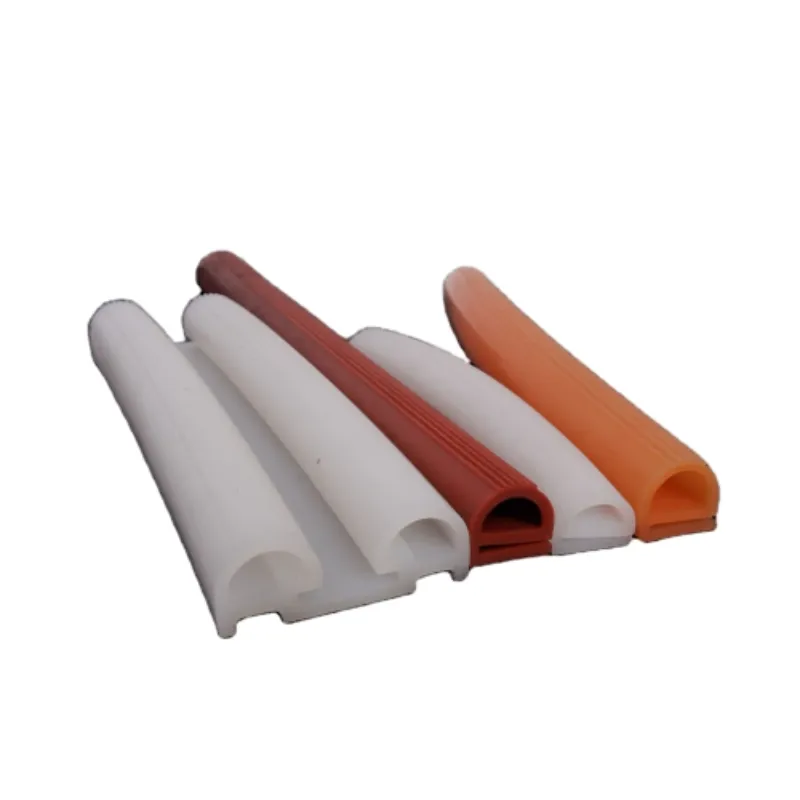Premium Silicone Seal Strips for Durable Sealing Solutions
The Importance of Silicone Seal Strips A Comprehensive Overview
Silicone seal strips are essential products that find applications in various industries, including construction, automotive, and electronics. These versatile strips, made from high-quality silicone rubber, serve multiple functions, primarily to provide sealing solutions for gaps and openings. This article explores the significance of silicone seal strips, their characteristics, applications, and benefits.
Characteristics of Silicone Seal Strips
One of the most notable features of silicone seal strips is their exceptional flexibility. Silicone rubber can be molded into different shapes and sizes, making it easy to create strips that fit specific needs. Furthermore, silicone has a high resistance to temperature extremes, making it suitable for a range of environments—from extreme cold to high heat. Silicone seal strips can typically withstand temperatures between -60°C to 250°C (-76°F to 482°F), making them ideal for applications that demand thermal stability.
In addition to temperature resistance, silicone is also highly resistant to moisture and UV radiation, ensuring longevity in outdoor applications. Unlike many other materials, silicone does not degrade when exposed to sunlight, making it a preferred choice for exterior sealing. Its non-toxic nature also makes silicone seal strips safe for use in homes and food contact environments.
Applications of Silicone Seal Strips
Silicone seal strips are used in a multitude of applications. In the construction industry, they are commonly utilized to seal windows, doors, and gaps in walls, preventing drafts and water intrusion. This sealing capability helps enhance energy efficiency in buildings, reducing heating and cooling costs.
In the automotive sector, silicone seal strips are essential for ensuring the integrity of vehicle structures
. They provide sealing solutions for windows, doors, and engine compartments, protecting against moisture and dust intrusion, which can lead to corrosion and mechanical failures.silicone seal strip

Furthermore, in the electronics industry, silicone seal strips are employed in devices to protect sensitive components from dust and moisture. They are often used in outdoor equipment, ensuring durability and reliability in various weather conditions.
Benefits of Using Silicone Seal Strips
The advantages of silicone seal strips are numerous. First and foremost, their durability ensures long-lasting performance, reducing the need for frequent replacements. This not only saves costs but also minimizes maintenance efforts.
Another benefit of silicone seal strips is their ease of installation. Most silicone strips come with adhesive backing, allowing for quick and hassle-free application. This convenience makes them a preferred choice for both professional contractors and DIY enthusiasts.
Finally, silicone seal strips contribute to enhanced energy efficiency in buildings and appliances. By effectively sealing gaps and preventing air leakage, silicone strips help maintain consistent indoor temperatures, leading to lower energy bills and a reduced carbon footprint.
Conclusion
In summary, silicone seal strips play a crucial role in a wide array of applications, providing reliable sealing solutions that contribute to energy efficiency, durability, and moisture protection. Their unique characteristics make them an invaluable resource across various industries, reinforcing the importance of incorporating silicone seal strips into construction, automotive, and electronic designs. Whether you're a homeowner or a professional, understanding the benefits of silicone seal strips can lead to better sealing decisions and improved overall performance.
-
Under Door Draught Stopper: Essential ProtectionNewsJul.31,2025
-
Garage Door Seal and Weatherstrips for ProtectionNewsJul.31,2025
-
Edge Banding Tape for Perfect EdgesNewsJul.31,2025
-
Table Corner Guards and Wall Corner ProtectorsNewsJul.31,2025
-
Stair Nose Edging Trim and Tile Stair SolutionsNewsJul.31,2025
-
Truck Bed Rubber Mats for Pickup BedsNewsJul.31,2025
-
Window Weather Stripping for Noise ReductionNewsJul.29,2025